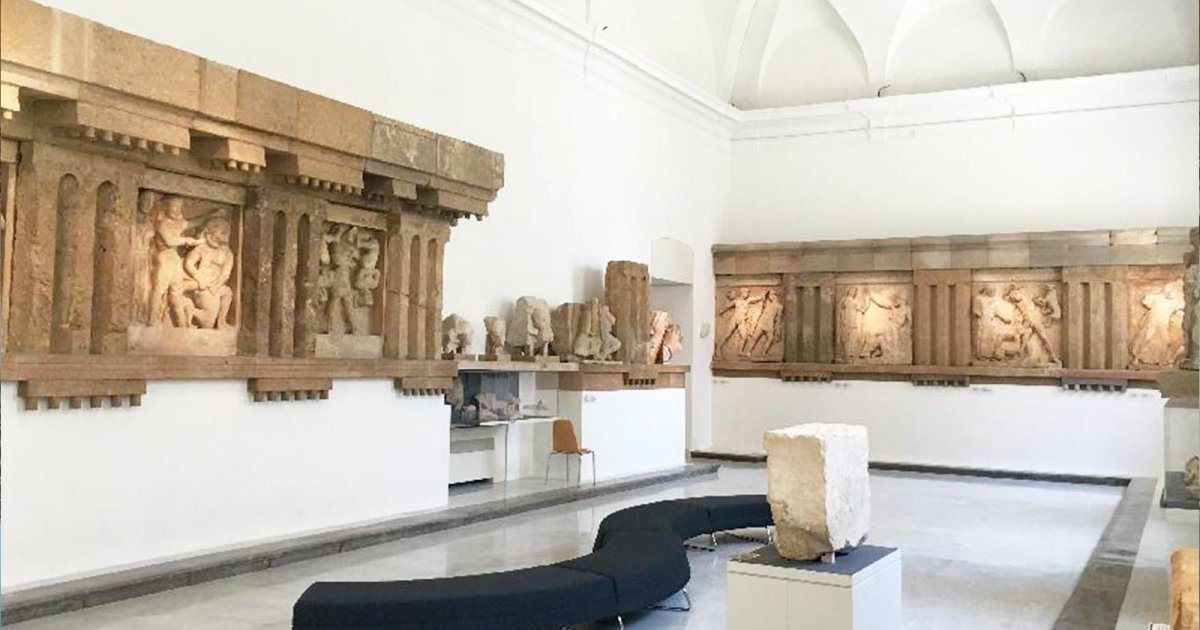ARCHAEOLOGICAL MUSEUM, Selinunte
 Language: English / USA
Language: English / USA
The eight rooms around the third courtyard are dedicated to Selinunte, the flourishing Greek colony that once occupied the southern coast of Sicily. A scale model gives you an idea of what the ancient city must have looked like, and where its magnificent temples were located. From here, you can follow the visitor route that will help you to understand what life was like in Selinunte, and how it developed until it was brutally destroyed by the Carthaginians in 409 BC.
Now press pause and go to the largest of the rooms.
In what was once the refectory of the convent, you can see the famous metopes from the Temples of Selinunte, the most important group of sculptures in the western Greek world. The metopes are the sculpted stone slabs that protected the ends of the wooden beams supporting the roof.
Take a look at the three metopes from the Temple of Apollo, sculpted by local craftsmen around 550 BC: the beautiful traces of paint allow you to admire how colorful they must have originally been. The finest of the three is Quadriga of Apollo, with four horses driven by Apollo powerfully emerging from the background. The one in the center, Perseus killing Medusa, is the work of a less talented artist; the figures are more roughly crafted, and the space is organized less effectively. Medusa, whose fearsome features were able to turn anyone who looked at her to stone, may seem at first sight to be kneeling, but she is actually depicted running in the schematic fashion of the time as she holds closely on to Pegasus, the winged horse which according to legend sprang forth from her neck.
On the left, you can see Athena, protectress of Perseus. The metope featuring Heracles transporting the Cercopes is probably the work of the same artist
An interesting fact: legend has it that Heracles, a strong demigod like his Roman counterpart Hercules, caught the Cercopes twins stealing his weapons. He captured them and carried them off hanging from a rod, as you can see in the sculpture. Their mother had warned them they would be vanquished by a man with a black bottom. As they were hanging upside down, they noticed the tanned buttocks of Heracles, because the lion skin only covered his back, and they burst into laughter. Heracles was so amused that he set them free.
Our visit to the Archeological Museum ends here. MyWoWo would like to thank you - see you again at another Wonder of the World!



